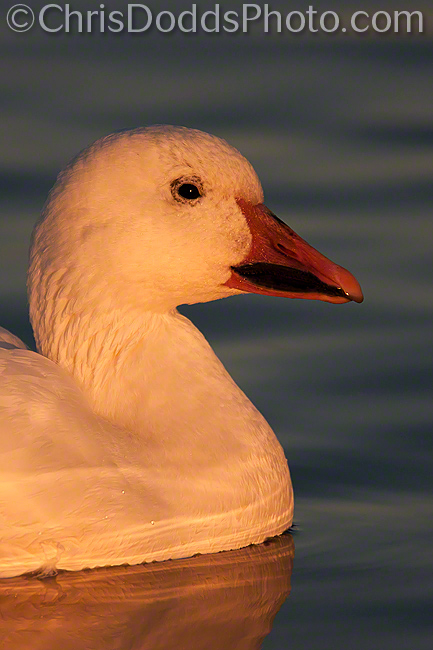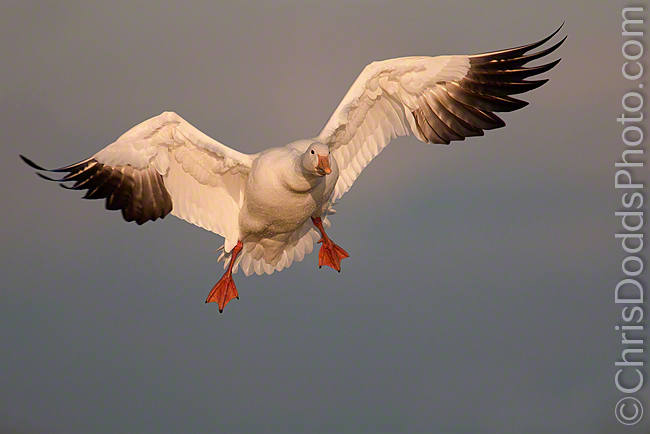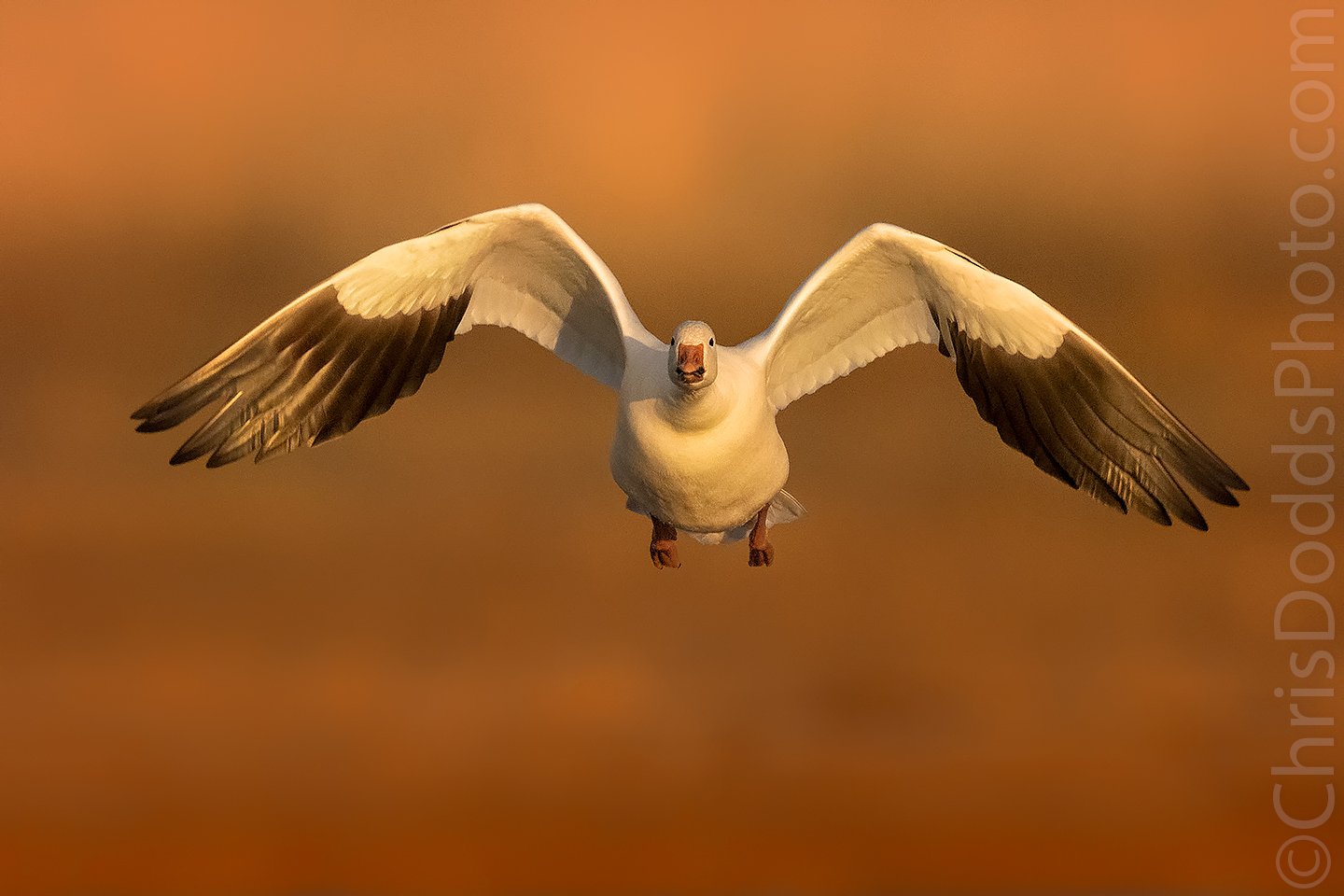 Snow Goose Golden Goose (Chen caerulescens, Oie des neiges, SNGO) Réservoir Beaudet, Victoriaville, Quebec. Image Copyright ©Christopher Dodds All Rights Reserved. Canon EOS 1DsMKIII, 500mm F4 L IS, 1.4X Teleconverter II, Tripod & Wimberley Head II. ISO 400, F8 @1/800s Manual mode. CLICK HERE TO PURCHASE A PRINT or LICENSE IMAGE FOR PUBLICATION
Snow Goose Golden Goose (Chen caerulescens, Oie des neiges, SNGO) Réservoir Beaudet, Victoriaville, Quebec. Image Copyright ©Christopher Dodds All Rights Reserved. Canon EOS 1DsMKIII, 500mm F4 L IS, 1.4X Teleconverter II, Tripod & Wimberley Head II. ISO 400, F8 @1/800s Manual mode. CLICK HERE TO PURCHASE A PRINT or LICENSE IMAGE FOR PUBLICATION
October 22-23, 2011 TWO DAY WEEKEND Workshop Safari. Limit of 6 photographers
October 24-28, 2011 FIVE DAY Workshop Safari. Limit of 6 photographers.
This is the very best place that I have found to photograph Greater Snow Geese up-close, portraits, in-flight and in golden light.
Located just a 1.5 to 2 hour drive from Montreal Airport (YUL), Réservoir Beaudet is immediately adjacent to the city of Victoriaville, in the Eastern Townships of southern Québec. I have photographed Snow Geese in many locations around North America including Bosque del Apachee National Wildlife Refuge in New Mexico, but none compare to the 80,000 to 1,000,000 (one million) Ducks and Geese that frequent the Reservoir in Victoriaville during migration. This workshop is timed perfectly to coincide with peak migration.
Join me, Canadian wildlife photographer Christopher Dodds, for a two, or five day Snow Geese photography Workshop / Safari. These trips will be limited to just six participants and the proximity and volume of geese will astound you.
 Snow Goose landing (Chen caerulescens, Oie des neiges, SNGO) Réservoir Beaudet, Victoriaville, Quebec. Image Copyright ©Christopher Dodds All Rights Reserved. Canon EOS 1DsMKIII, 500mm F4 L IS, 1.4X Teleconverter II, Tripod & Wimberley Head II. ISO 320, F5.6 @1/2000s Manual mode. CLICK HERE TO PURCHASE A PRINT or LICENSE IMAGE FOR PUBLICATION
Snow Goose landing (Chen caerulescens, Oie des neiges, SNGO) Réservoir Beaudet, Victoriaville, Quebec. Image Copyright ©Christopher Dodds All Rights Reserved. Canon EOS 1DsMKIII, 500mm F4 L IS, 1.4X Teleconverter II, Tripod & Wimberley Head II. ISO 320, F5.6 @1/2000s Manual mode. CLICK HERE TO PURCHASE A PRINT or LICENSE IMAGE FOR PUBLICATION
From equipment choice and overview, to portrait and flight shot techniques, Chris will be there to teach and answer your questions. Chris is comfortable teaching and answering questions from any level photographer; from the seasoned pro, to the beginner who has no real experience in the field; all in his usual, casual and easygoing style. Exposure, composition and flash will all be discussed and demonstrated. Chris is very open and always willing to help and share with his students.














